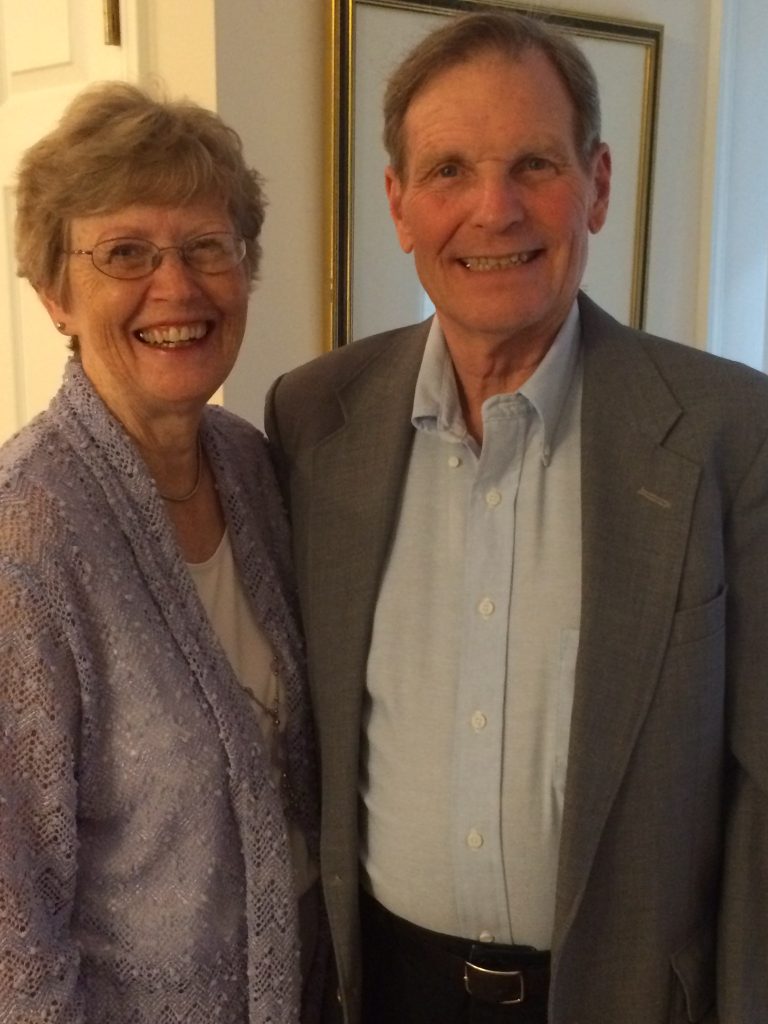Ashbrook Supporters Reflect on How American History is Remembered
December 24, 2020


Flying into Honolulu in June 1998, Phil Anderson looked down at an enormous battleship newly arrived in Pearl Harbor: the USS Missouri. Nicknamed “Mighty Mo,” the ship was anchored next to the memorial to the sunken USS Arizona, the resting place for 1102 sailors and Marines killed during the Japanese attack of December 7, 1941. The Arizona marked the beginning of the American effort in World War II. The Missouri would memorialize its end, on September 2, 1945, as the Japanese emperor arrived on deck to sign the surrender agreement.
Born during the war, Anderson had witnessed the transformation in American and Japanese relations following it. He’d joined the Air Force after graduating from high school in 1960, served twenty years, retired and become a commercial pilot. Now he flew routes between Honolulu and Japan for Japanese Airlines. A resident of Washington state, he’d read news of the decision to move the Missouri from the harbor at Bremerton to Honolulu. He could understand the reluctance of fellow Washingtonians to give up the famous ship. Mighty Mo inspired a lot of patriotic pride. It had received five battle stars for services during World War II and the Korean War. Decommissioned to the Puget Sound in 1955, it had been refitted with cruise missiles in 1986 and earned new honors in the First Gulf War.
Sitting near Anderson was a recent college graduate. As older passengers discussed the installation of Mighty Mo at Pearl Harbor, the young man asked, “Does this ship have some special significance?”
To Anderson, the question represented a generational gulf caused by a neglect of history education. The young man had studied no US history since his one required course in high school. Anderson himself had struggled to memorize facts and dates for his own high school history courses. But he could never forget the dramatic events seen by Mighty Mo.
Anderson and his wife Naomi, a retired Air Force nurse, worry that young Americans today know little about our country’s nearly 250-year history. Forgetfulness of the American Founding worries them most. “For democracy to survive it’s imperative that students learn about the principles of the Founders.”
Our Constitution was designed to protect citizens’ “individualism, self-responsibility, and self-reliance,” Phil Anderson says. Today’s students seem too willing to “rely on the federal government for food, college education and healthcare.” Expecting government to meet these needs will limit their freedom to pursue happiness in their own way, he believes.
Students need to understand the Founders’ careful measures to balance governmental powers. They assigned distinct responsibilities to the legislative, executive, and judicial branches; they limited the power of more populous states over the others by balancing the proportional representation in the House with the system in the Senate that grants every state two Senators, and by instituting the Electoral College. “Many students don’t realize that if we did away with the Electoral College, California, New York and a few other states could decide our elections.”
How can we give young people a more informed historical perspective? The Andersons believe Ashbrook education offers a solution. Already members of the Directors Club, a group of generous donors, they are learning about Ashbrook’s seminar style.
Treating history as a series of dates and facts to be memorized doesn’t work well, Phil Anderson knows. But trading memorization for the instant accounts of history available on the Internet is dangerous, he says; so much of what one finds there is uninformed opinion. The Ashbrook model—conversation about the actual words of the Founders, or the contrasting arguments of twentieth century socialists and capitalists—keeps history tethered to the facts. Such conversation also engages the mind.
Naomi Anderson worries about teachers who, required to take most of their college credits in educational methods courses, lack time to study American history itself. In the Air Force, she was asked to teach medical technician courses. More of a doer than a speaker, she dreaded the assignment. But an eight-week methods course left her feeling she could capably teach anything. Pedagogy can be learned quickly, she says. Content needs much more time.
She remembers a favorite grammar school project: painting a map of America onto a huge piece of oilcloth. Each child researched the distinctive products and symbols of a state, painting it onto the map. The project empowered students to conduct their own investigation of America. Similarly, Ashbrook-style discussion of primary documents inspires independent research and thought. “The work Ashbrook is doing is remarkable,” Mrs. Anderson says. “Hearing more about it makes me want to do more to support you.”
Ashbrook depends on the generous gifts of donors like the Andersons. They underwrite the necessary education of history and civics teachers. There are no shortcuts in this education; to understand the principles that have guided earlier Americans, teachers must read those Americans’ words and discuss them carefully with university scholars and teaching colleagues. Having worked out their own understanding of American principles, they can challenge American youth to do the same.

